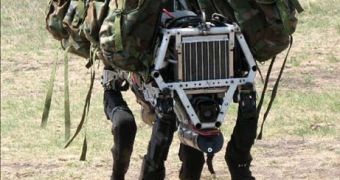During a speech held on January 15, at the Army Aviation Symposium, in Arlington, Virginia, General Robert Cone, the head of the Training and Doctrine Command of the US Army, said that the service is planning to replace some of its active duty personnel with robots in the coming years.
The official said that the US Army needs to be transformed into a “smaller, more lethal, deployable and agile force,” capable of tackling the same challenges it does today on the postwar sequestration era.
At this point, Army analysts are doing a series of feasibility studies on a proposal to shrink brigade combat teams, from 4,000 to 3,000 soldiers – a 25 percent decrease – and replacing some of the active duty personnel with robots and other types of unmanned platforms.
One aspect of the plan is introducing unmanned ground vehicles capable of following or leading the way for manned platforms. These robots would be lighter-armored and more agile, therefore reducing the overall weight value of each individual brigade, Defense News reports.
“I’ve got clear guidance to think about what if you could robotically perform some of the tasks in terms of maneuverability, in terms of the future of the force,” the top official said. He also reported receiving “clear guidance to rethink” the size of the standard infantry squad, which now stands at nine strong.
In a dozen years of war, the US Army has lost a significant part of its maneuverability, deployability and firepower, and the service wants it back, the General added. Most of these capabilities were lost in favor of force protection, as the Army had to adapt to guerrilla tactics and other forms of asymmetrical warfare in various theaters of operations around the world.
By the end of 2015, the total number of soldiers serving in the Army will be reduced from 540,000 to 490,000, with a further reduction of 70,000 members scheduled to enter effect by 2019. An advisory panel is currently being assembled to consider these changes thoroughly, Cone announced.
Increased technological capabilities, and recent scientific advancements, may prove sufficient to compensate for the retirement of 1,000 soldiers from each brigade, the General implied. Robots are currently so advanced and autonomous that they could easily pick up the extra load.
“When you see the success, frankly, that the Navy has had in terms of lowering the numbers of people on ships, are there functions in the brigade that we could automate – robots or manned/unmanned teaming – and lower the number of people that are involved given the fact that people are our major cost,” he concluded.

 14 DAY TRIAL //
14 DAY TRIAL //